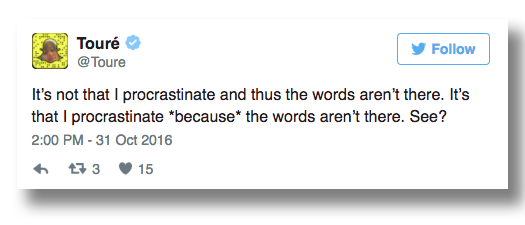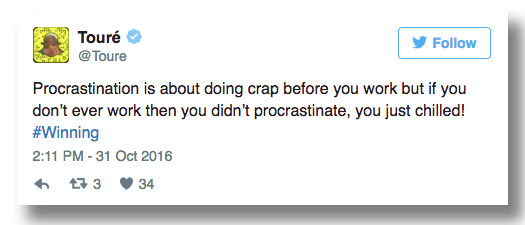According to an article in the Atlantic, the industrial designer Raymond Loewy had a theory about what makes new products desirable.
He believed that consumers are torn between two opposing forces: neophilia, a curiosity about new things; and neophobia, a fear of anything too new. As a result, they gravitate to products that are bold, but instantly comprehensible. Loewy called his grand theory “Most Advanced Yet Acceptable”—MAYA.
The theory applies equally to art.
Could Loewy’s MAYA theory double as cultural criticism? A common complaint about modern pop culture is that it has devolved into an orgy of familiarity. In her 2013 memoir cum cultural critique, Sleepless in Hollywood, the producer Lynda Obst mourned what she saw as cult worship of “pre-awareness” in the film and television industry. As the number of movies and television shows being produced each year has grown, risk-averse producers have relied heavily on films with characters and plots that audiences already know. Indeed, in 15 of the past 16 years, the highest-grossing movie in America has been a sequel of a previously successful movie (for example, Star Wars: The Force Awakens) or an adaptation of a previously successful book (The Grinch). The hit-making formula in Hollywood today seems to be built on infinitely recurring, self-sustaining loops of familiarity, like the Marvel comic universe, which thrives by interweaving movie franchises and TV spin-offs.
But perhaps the most maya-esque entertainment strategy can be found on award-winning cable television. In the past decade, the cable network FX has arguably produced the deepest lineup of prestige dramas and critically acclaimed comedies on television, including American Horror Story, The Americans, Sons of Anarchy, and Archer. The ideal FX show is a character-driven journey in which old stories wear new costumes, says Nicole Clemens, the executive vice president for series development at the network. In Sons of Anarchy, the popular drama about an outlaw motorcycle club, “you think it’s this super-über-macho motorcycle show, but it’s also a soap with handsome guys, and the plot is basically Hamlet,” she told me. In The Americans, a series about Soviet agents posing as a married couple in the United States, “the spy genre has been subverted to tell a classic story about marriage.” These are not Marvel’s infinity loops of sequels, which forge new installments of old stories. They are more like narrative Trojan horses, in which new characters are vessels containing classic themes—surprise serving as a doorway to the feeling of familiarity, an aesthetic aha.
I have always believed in studying older stories, even using them explicitly as templates or models, so Loewy’s theory comes as no surprise to me.
In fact, there is a sub-genre of how-to books for the analytically-minded looking to write a bestseller. These guides dissect popular novels for common elements — a recipe for success. The latest, called The Bestseller Code, sics a computer algorithm on the data and concludes that my Defending Jacob is #10 on its list of “100 novels our computer thinks you should read.” So it turns out my blazingly original work is actually hopelessly derivative, which, if Loewy is right, might explain a few things.



